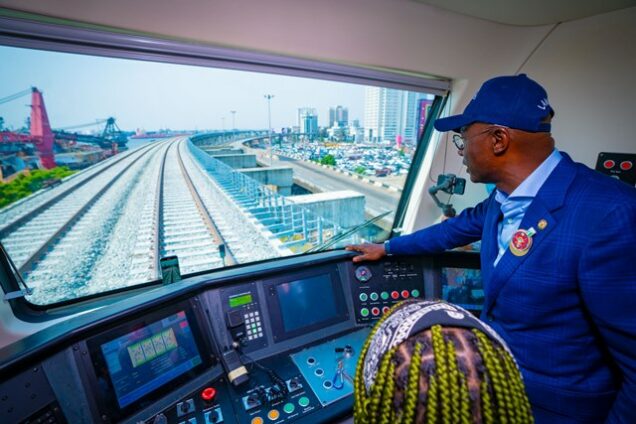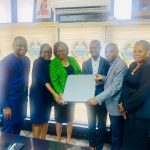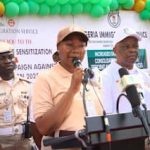
NO doubt, the Lagos State Government has raised the bar for other states of the federation with the inauguration of the 37-kilometre Red Line rail scheme. Inaugurated by President Bola Tinubu on February 29, the Lagos Rail Mass Transit scheme is a testament to the cosmopolitan excellence, continuity in governance, and the political will of Governor Babajide Sanwo-Olu.
It is a new dawn for Lagos, and it continues to stand out in the country. Having completed 27km of the 37km scheme, the Red Line is expected to move 500,000 passengers daily when fully operational. In a megacity, this is a massive achievement. With eight stations, the Red Line traverses the Agbado-Ikeja, Mushin-Yaba-Oyingbo-Iddo corridor. This should drastically reduce traffic congestion and greenhouse gas emissions.
Earlier in January 2023, the 27km Blue Line was inaugurated by former President Muhammadu Buhari and was fully operational in September. It runs from Marina on Lagos Island to Mile 2 on the mainland and back.
Sanwo-Olu should not relent in the delivery of first-class infrastructure in the state. He should live up to the billing, as he affirmed during the event: “Mr President (Bola Tinubu), this is not the end of the story, but merely the beginning. As I said earlier, we are on a long and exciting journey. Much has been accomplished, and there is much ahead to be done.”
The vision is to construct six lines across Lagos and neighbouring Ogun State. The Green Line (71.49km) is to run from Marina to the Lekki Free Trade Zone, while the Purple Line (54.35km) will run from the Redemption Camp (Ogun) to Ojo, near the Lagos State University. The Orange and Yellow lines will complete the scheme.
The LMRT morphs from a chequered history. The first civilian governor of the state, Lateef Jakande (1979-1983), laid the groundwork for the Lagos metroline. Unfortunately, the agreement signed with a French consortium to develop it was scrapped by the Buhari-led military regime, after it toppled the Second Republic. The taxpayers repaid $78 million for the default.
In the Fourth Republic, Governor Tinubu (1999-2007) revived the metroline idea and has now taken more than two decades before coming to fruition.
Pegged backed by funding challenges, the delay in execution has been costly. In 2016, the World Bank stated that the Red Line would cost $135 million. Sanwo-Olu said the two lines would cost N100 billion.
Indeed, Lagos needs a robust metro rail system as part of its broad intra-modal transport infrastructure. The state’s estimated network of 9,100 roads hosts about 5.0 million vehicles. Traffic congestion is commonplace. With a population of 23 million, per LASG, mobility is a strenuous and hostile endeavour.
The World Economic Forum stated that commuters spent 30 hours per week commuting to-and-fro work, with air pollution costing the state 2.1 per cent of its GDP and leading to 60 per cent of deaths for children under-five. The Economist Intelligence Unit Liveability Index ranked the state the world’s fourth most unliveable city due to factors like infrastructural deficit, pollution, and gridlock.
Clearly, the metroline shows that the state government is attuned to the needs of its residents. To broaden the intra-modal system, it should invest in roads, and instigate the private sector to run efficient waterways, and air shuttle services.
The world’s major cities have reputable metro systems. African cities, Addis Ababa (Ethiopia), Tangiers and Casablanca (Morocco), Algiers (Algeria), Tunis (Tunisia), and Cairo (Egypt) per Far and Wide, an online resource, also boast efficient rail systems. States with urbanised capitals like Port Harcourt, Ibadan, Kaduna, Kano, Benin, Warri, Akure, Jos, and enterprising towns like Ilesa, Sagamu, Aba, and Onitsha should partner with international firms to build rail systems, boost their FDIs and improve the infrastructural and economic outlook of their states.













